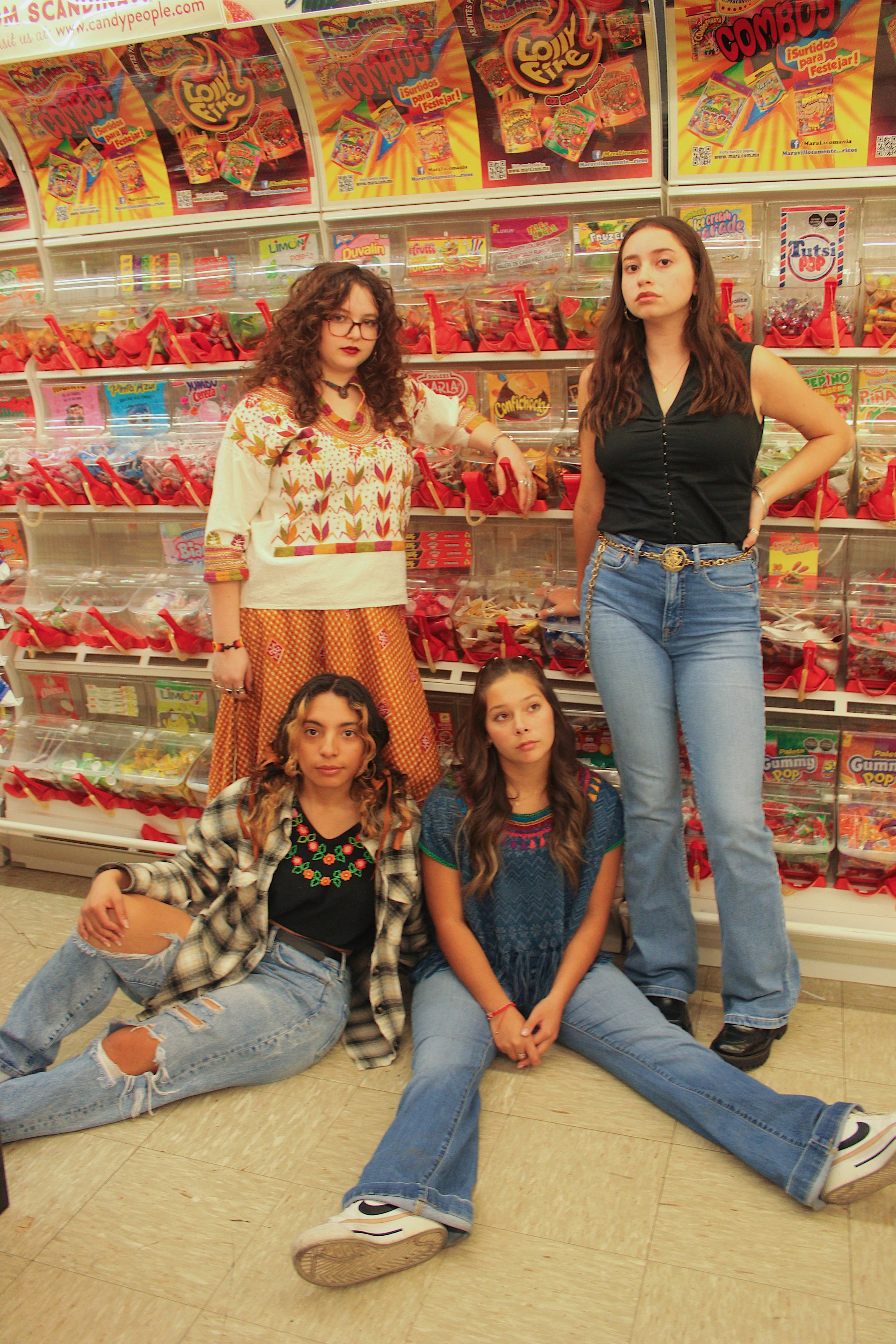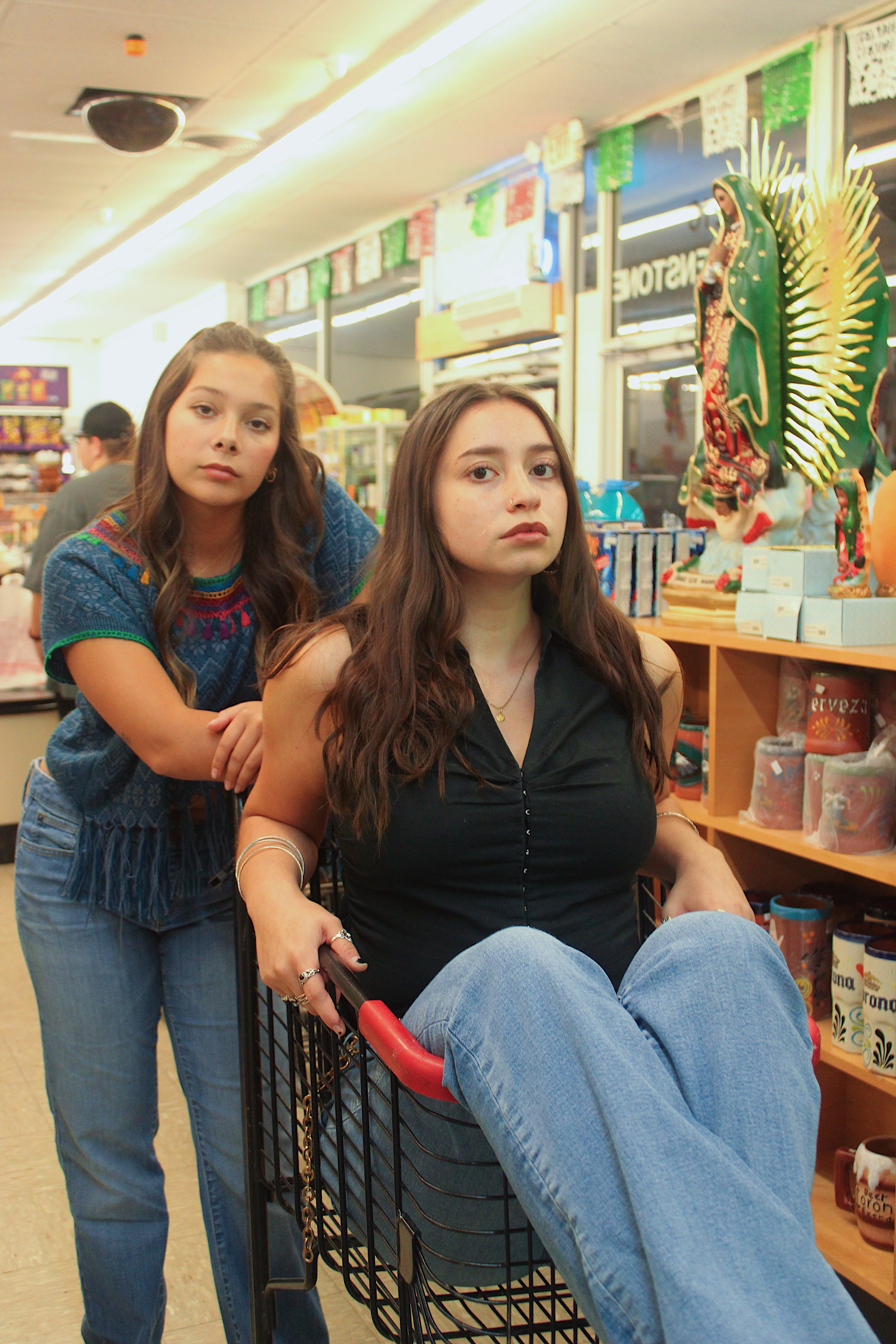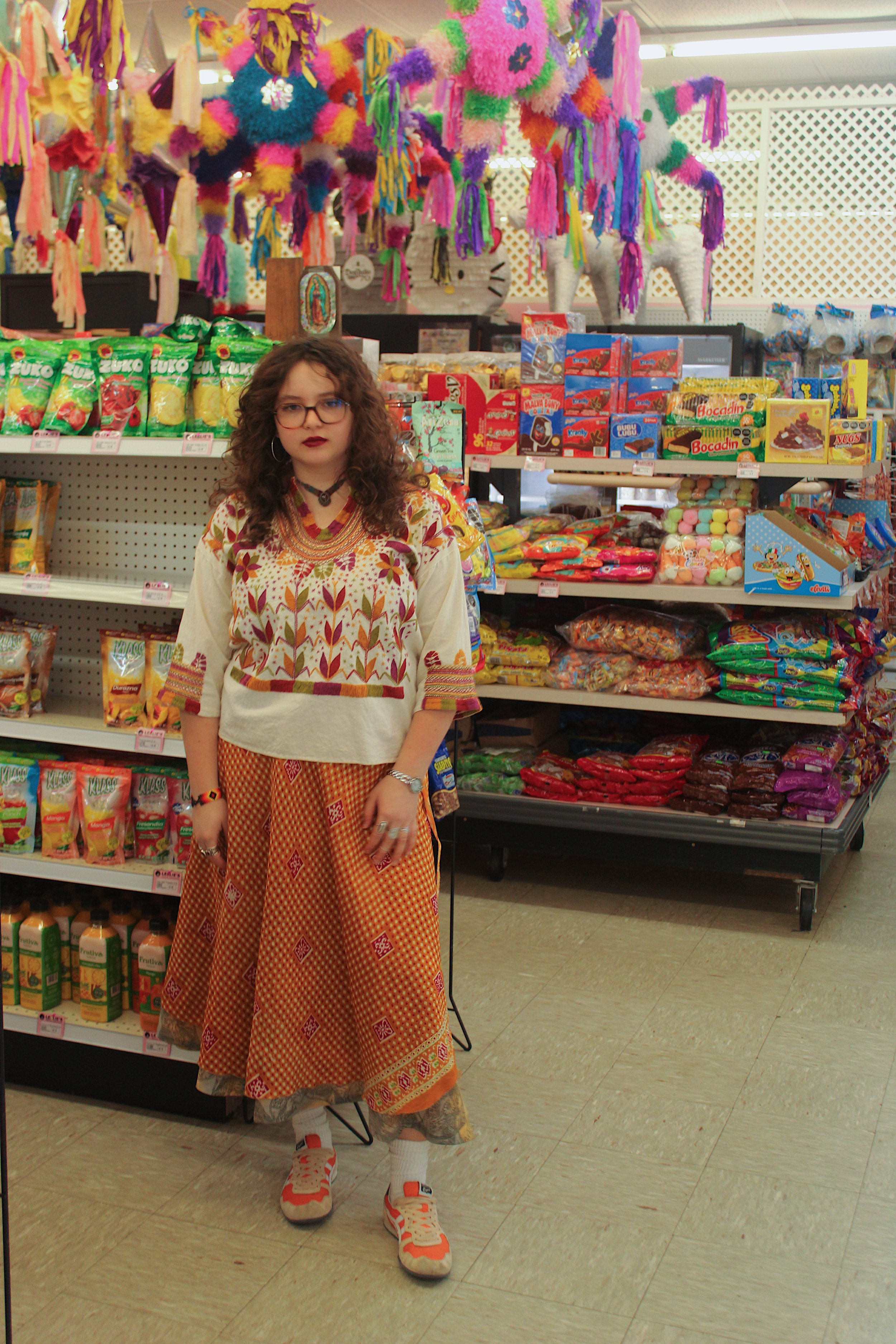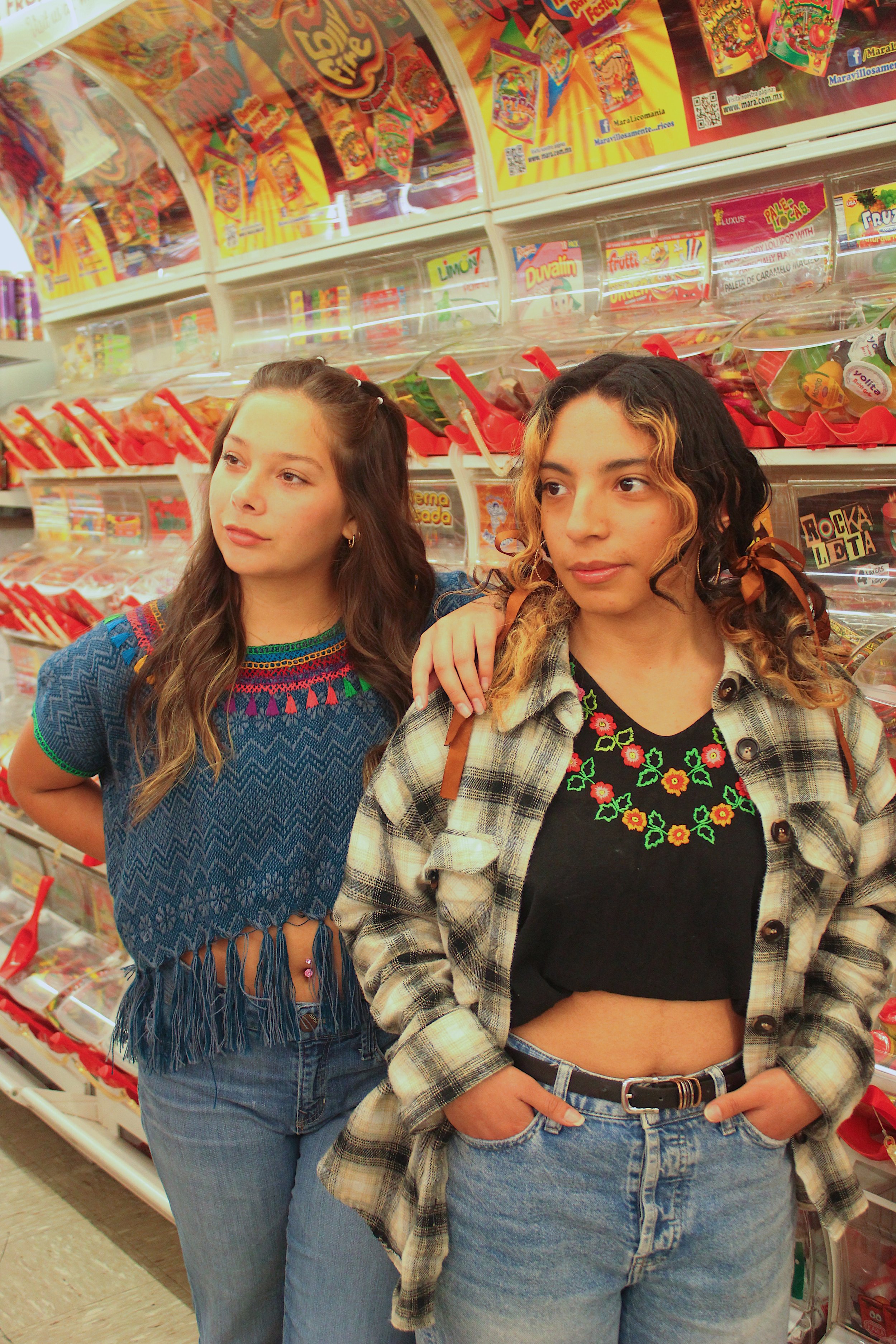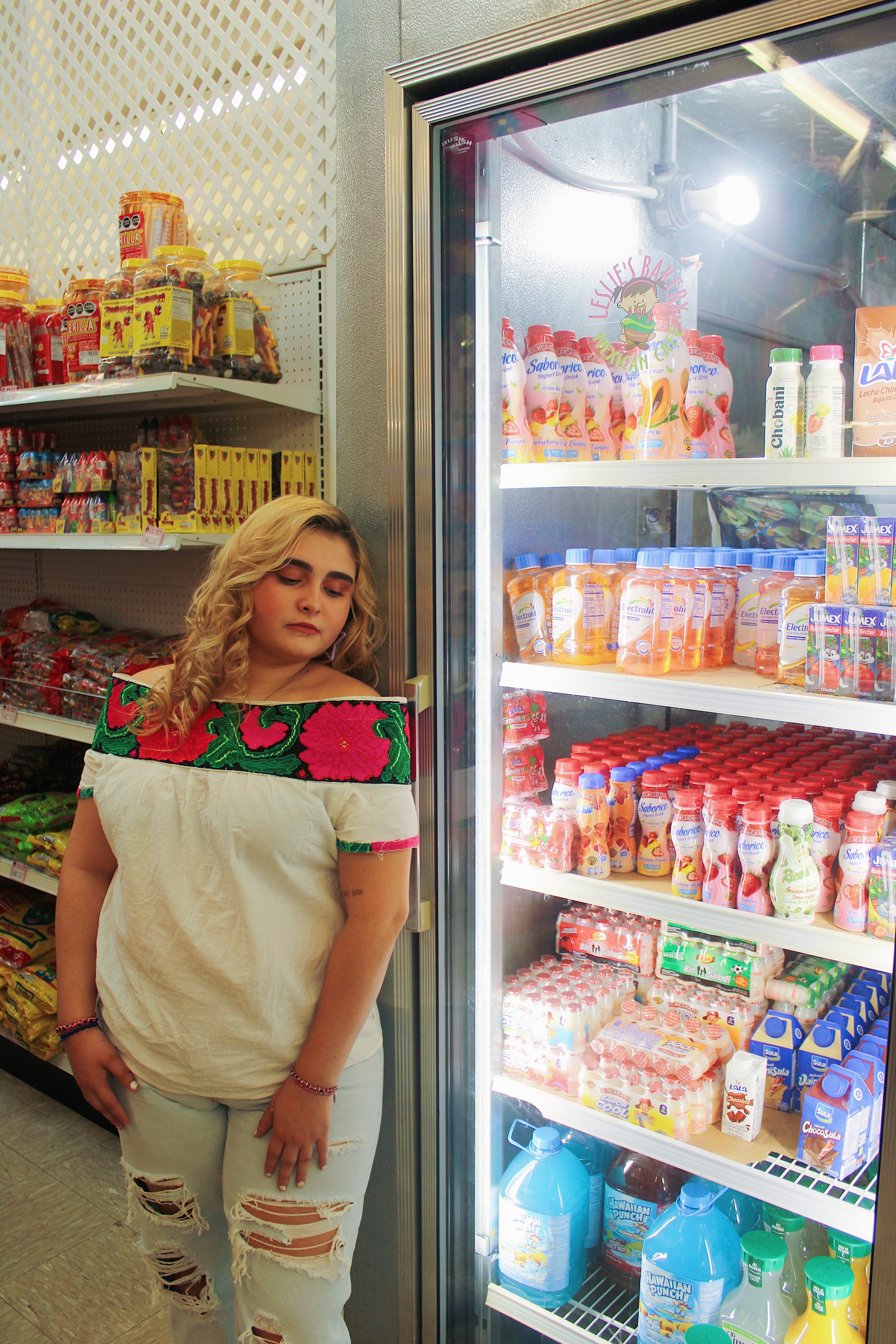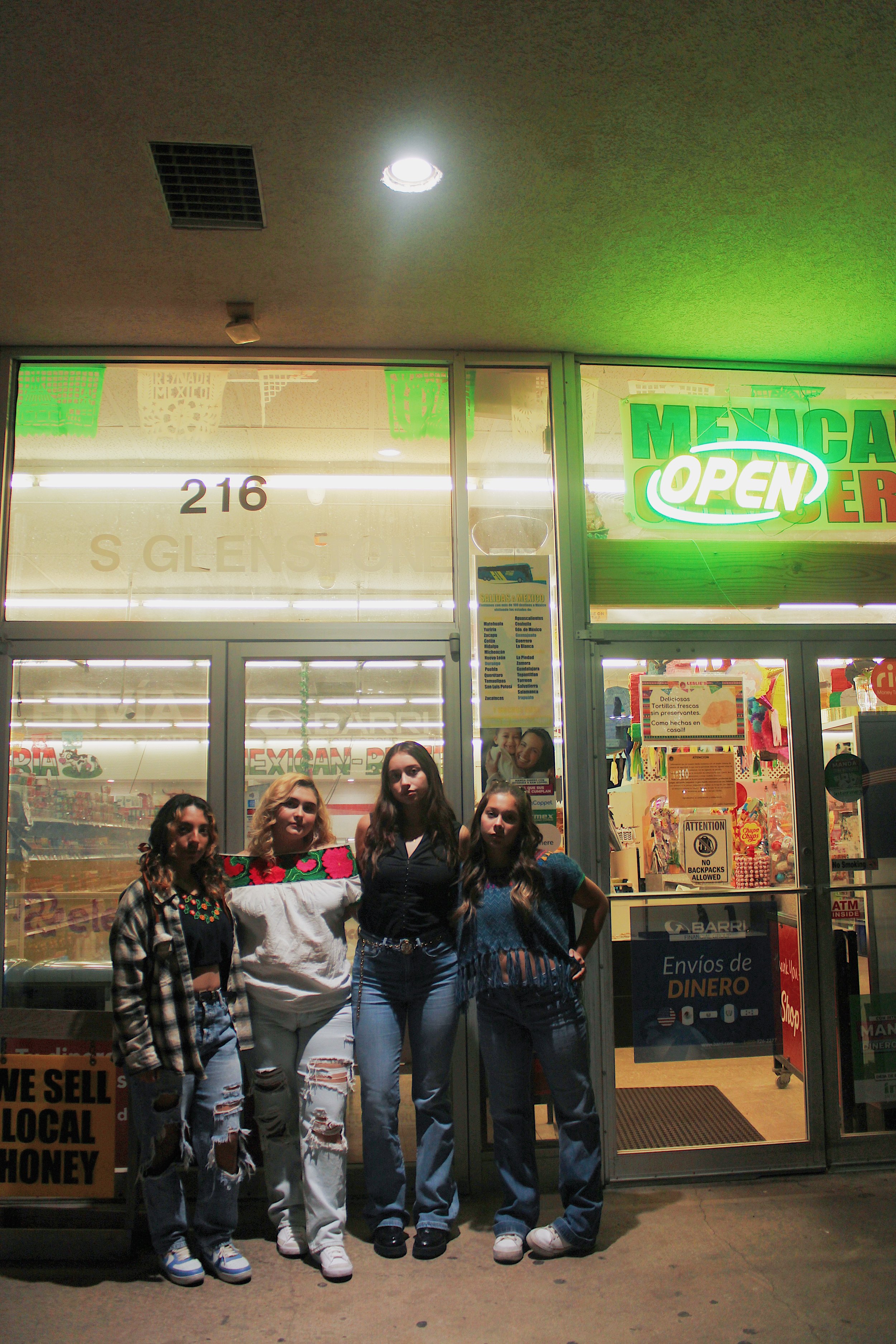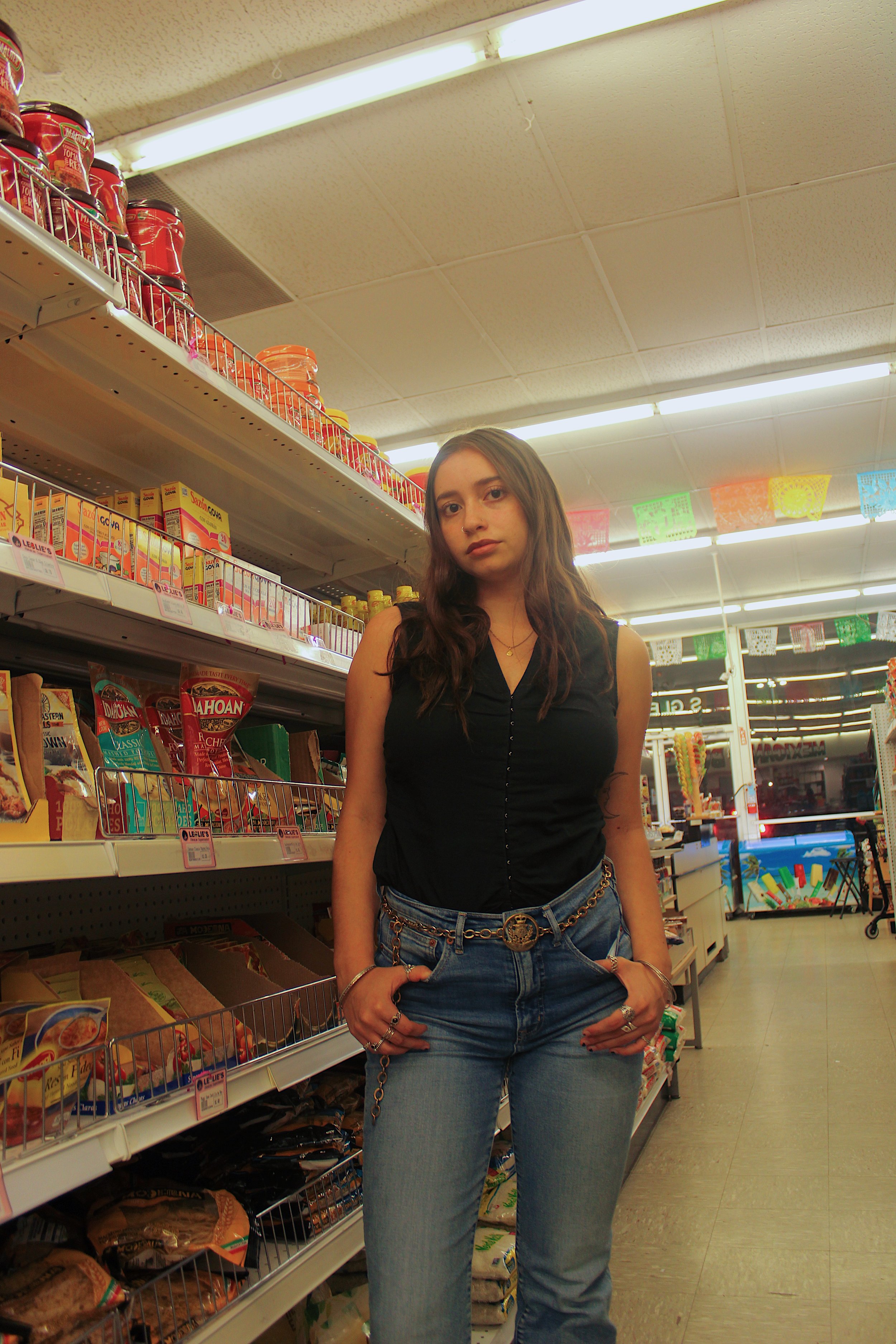Latinx Fashion Throughout the Decades
Written By Natalia Cordero
Photographed By Janette Beckner
Modeled By Natalia Cordero, Janette Beckner, Elisa Peters, Khristin Guardado, & Kalista Rayne
As we come to the end of Hispanic Heritage Month, I want to highlight the importance of fashion within this community. Many cultures and countries in Latin America have very unique fashion styles. From Mexico all the way to Chile, there have been many different ways to express oneself throughout the decades. The 20th century was a monumental time for Latinx communities in the exploration of identity through fashion.
Many Latino countries faced political unrest partnered with civil rights movements in the 1960s and 1970s. Consequently, modesty was at its peak during these years however, this did not stop the public from experimenting with different colors and fabrics. Long, flowy skirts were at their most popular, coupled with embroidered, ruffled shirts. Vibrant shades of red, orange, yellow, and green were prominent during this time as well. In the 70s, Chicano and disco styles began to infiltrate Latin America. The Chicano movement and style was introduced as a way to encourage Mexican-American identities and rights. This style included large belts, “guayaberas” (embroidered shirts), and high waisted pants. Disco style was integrating its way into Latino countries with its bell bottom jeans, platform shoes, and flashy tops.
During the 1980s, bright colors with patterns were put into everyday use. Patterns such as zebra and cheetah print were all the rage, and modesty was going out of style as women and men started wearing tight clothing. As Western fashion began incorporating shoulder pads into their fashion, Latin culture did the same. The infamous “zoot suit” was first made popular by the Black community in New York in the ‘30s after “The Zoot Suit Riots,” but experienced a resurgence and adoption by other communities of people of color such as Latinos in the ‘80s.
Baggy pants, shirts, large visible belts, and large gold hoops took over Latinx fashion in the 1990s. The baggy clothing was influenced by hip-hop culture along with gold accessories such as large hoops, chains, and bracelets. Crop tops also began making their way into the public’s style. Oftentimes, crop tops were paired with loose jeans and a flashy belt to accessorize. Bandanas were also a big accessory during this time. People wrapped bandanas around their heads and added it into outfits. These styles didn’t just stay in the ‘90s as they carried well over into the early 2000s. Low rise jeans were gaining popularity accompanied with chunky, platform shoes. To keep the baggy clothes trend going, graphic tees of popular artists or bands were added into the mix and were very popular as the Latinx music influence began to take off. Stars such as Daddy Yanke, Selena Quintanilla, Ricky Martin, and more are just a few examples of the faces one would see on a graphic tee.
The evolution of Latinx fashion from the 1960s to the 2000s is extraordinary and has made a huge impact on the community. From vibrant skirts from the ‘60s to baggy jeans in the 2000s, Latinx people have experimented and been influenced by many different styles since the very beginning of the 20th century. The exploration of Latinx self identity came with creativity and diversity, which was demonstrated through fashion. Our heritage is not limited to one month, so let the official ending of Hispanic Heritage Month be an invitation to continue to embrace your identity and let it be known through your very own style!

